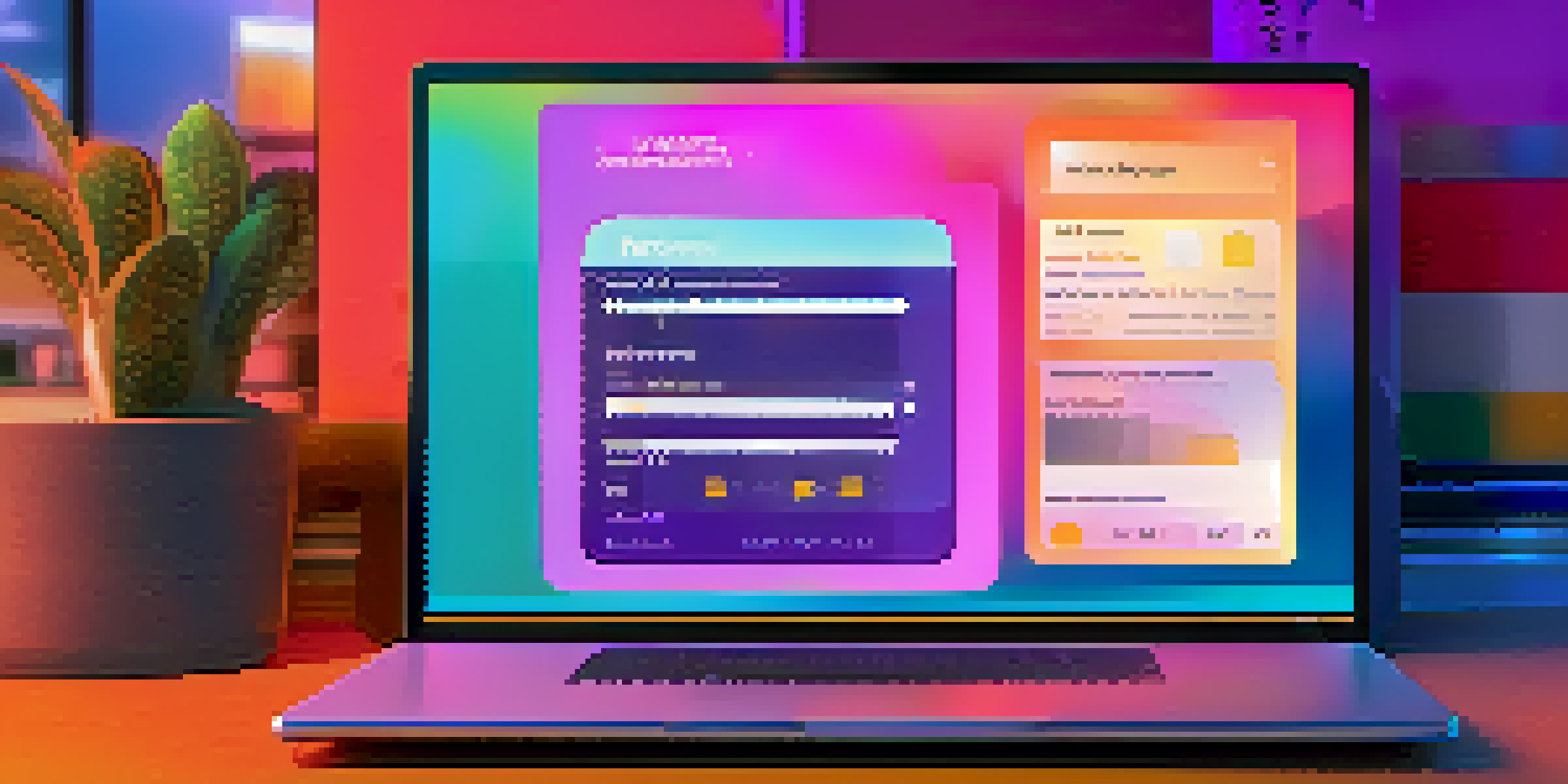Top 10 Security Threats Facing NFT Owners in the Digital Space

Phishing Attacks Targeting NFT Holders
Phishing attacks have become alarmingly common in the NFT space. These attacks often involve fake websites or emails that mimic legitimate platforms, tricking users into providing sensitive information. Imagine receiving a seemingly authentic email from your favorite NFT marketplace, only to find out it was a clever ruse.
The price of security is eternal vigilance.
Once an attacker gains access to your wallet or account, they can steal your NFTs with just a few clicks. It’s vital to examine any links or requests for information carefully. Always double-check the URL and look for signs of legitimacy before entering any personal details.
In a world where digital assets are the new gold, staying vigilant against phishing is your first line of defense. Using two-factor authentication (2FA) can add an extra layer of security, ensuring that even if your credentials are compromised, your assets remain protected.
Smart Contract Vulnerabilities and Exploits
Smart contracts are the backbone of the NFT ecosystem, but they aren’t without their flaws. These contracts can contain bugs or vulnerabilities that malicious actors can exploit to drain wallets or manipulate transactions. Imagine a beautifully crafted piece of digital art, only for it to be stolen due to a simple coding error.

As an NFT owner, it’s essential to understand that not all smart contracts are created equal. It pays to do thorough research on the projects you’re investing in, looking for audits and community feedback. If a project lacks transparency, it might be a red flag.
Phishing Attacks Are Widespread
Phishing scams in the NFT space often involve deceptive emails or websites that trick users into revealing sensitive information.
Keep in mind that even reputable projects can be susceptible to attacks. Regularly reviewing the contracts and staying informed about potential vulnerabilities can help you safeguard your digital assets.
Rug Pulls: The Silent Thieves of the NFT World
Rug pulls are a deceptive tactic where developers abandon a project after attracting investment, leaving NFT owners with worthless assets. It’s like putting your money into a shiny new toy, only to discover it was filled with nothing but air. These scams often happen in newly launched projects without sufficient backing or community support.
In the world of cybersecurity, the enemy is always evolving, so we must stay a step ahead.
To protect yourself from rug pulls, be sure to research any NFT project before investing. Look for information about the team behind the project and their history in the crypto space. A strong community presence and transparent communication can indicate a more trustworthy venture.
Additionally, consider sticking to established platforms and projects with a proven track record. While the allure of new and exciting NFTs can be tempting, taking the time to assess their legitimacy will save you from potential heartbreak.
Wallet Security: Keeping Your NFTs Safe
Your wallet is your gateway to the NFT universe, making its security paramount. Whether you use a hot wallet (connected to the internet) or a cold wallet (offline storage), understanding the risks and best practices is essential. Think of your wallet as a treasure chest; the more securely you lock it, the safer your treasures will be.
Regularly updating your wallet software and using strong, unique passwords can help fend off unauthorized access. Additionally, consider using hardware wallets for added security, especially for high-value NFTs. These wallets store your private keys offline, making them less susceptible to hacks.
Smart Contracts Can Be Vulnerable
Malicious actors can exploit bugs in smart contracts, highlighting the importance of thorough research and audits before investing in NFTs.
Finally, always back up your wallet information securely. In the event of loss or theft, having a backup can be a lifesaver, allowing you to recover your assets and continue your journey in the digital art world.
Marketplaces: Navigating Potential Risks
NFT marketplaces play a vital role in the buying and selling of digital assets, but they can also pose risks. Some platforms may lack adequate security measures, making them easy targets for hackers. Imagine trading your prized NFT only to find out the marketplace was compromised, leaving you empty-handed.
To minimize risk, always use well-known and reputable marketplaces that prioritize user security. Look for platforms that offer features like 2FA, escrow services, and insurance for digital assets. These precautions can make a significant difference in protecting your investments.
Moreover, keep abreast of any security breaches reported by the marketplace. If a platform experiences a hack, consider withdrawing your assets until it has resolved the issue and assured users of their safety.
Scams and Fake NFT Listings: Buyer Beware
The NFT landscape is rife with scams, including fake listings that promise valuable assets but deliver disappointment. It’s crucial to remain skeptical and do your homework before making a purchase. Imagine being lured by a stunning piece of art, only to find out it was a cheap imitation.
Always verify the authenticity of an NFT before purchasing, checking the creator's profile and previous sales. Look for red flags, such as unusually low prices or listings without a verifiable history. If something seems too good to be true, it probably is.
Community Vigilance is Crucial
Engaging with fellow NFT enthusiasts can help identify threats and foster a safer environment for all participants in the digital art space.
Additionally, engaging with community forums can provide insights into reputable artists and projects. The more informed you are, the better equipped you’ll be to navigate the complex world of NFTs safely.
Privacy Risks: Protecting Your Digital Identity
In the digital space, privacy is often at risk, and NFT owners need to be cautious about sharing personal information. Many platforms require users to create profiles, which can inadvertently expose sensitive data. Think of it as leaving your front door open; you never know who might wander in.
To safeguard your identity, consider using pseudonyms or separate accounts for NFT transactions. This way, you can enjoy the benefits of the NFT community while keeping your personal information private. Additionally, be mindful of the information you share on social media platforms.

Lastly, familiarize yourself with the privacy settings of the platforms you use. Understanding how your data is handled can help you make informed decisions about what to share and with whom.
The Importance of Community Vigilance
In the fast-paced world of NFTs, community vigilance is essential for spotting threats. Engaging with fellow collectors and artists can provide valuable insights and warnings about potential scams or security issues. Think of your community as a neighborhood watch group, always looking out for each other.
Participating in forums or social media groups dedicated to NFTs can keep you informed about the latest trends and threats. Sharing experiences and advice can empower everyone to make safer decisions. The more connected you are, the better protected you’ll be.
Remember, the NFT space is still evolving, and staying informed is key. By fostering a culture of vigilance within the community, you not only protect yourself but also contribute to a safer environment for all NFT enthusiasts.